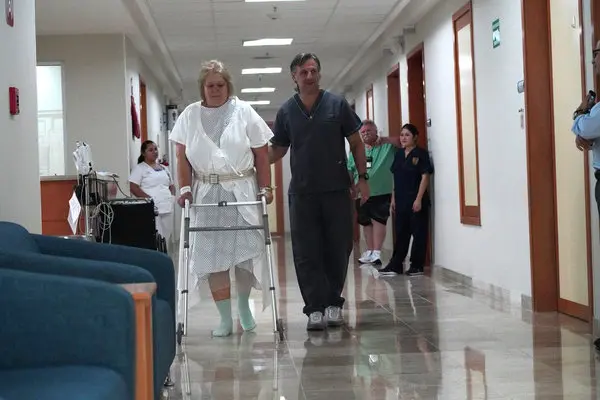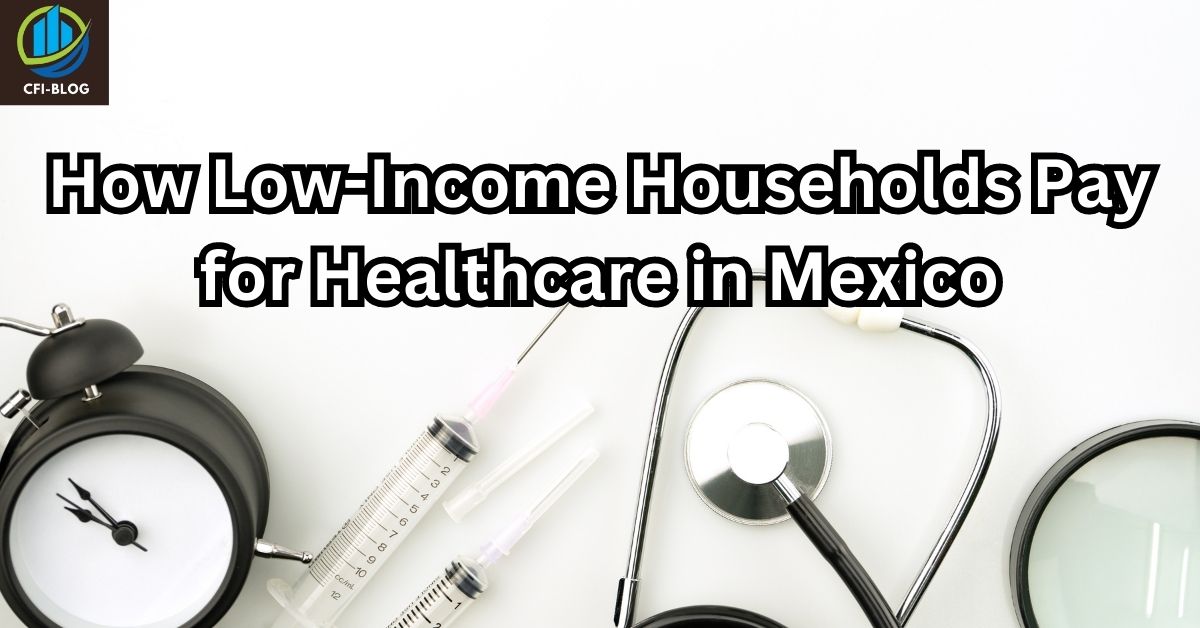Mexico faces a range of health challenges, from infectious diseases to chronic conditions and mental health issues. Some of the most common diseases in Mexico are insect-borne diseases, hepatitis, obesity, depression, tuberculosis, diabetes, Vector-borne diseases, Gastrointestinal diseases, etc.
But when it comes to healthcare, good healthcare is very expensive, so it becomes very difficult for low-income people to get the required treatment. Because of the lack of money, they end up taking treatment from any local clinic or traditional healers, which might not always be helpful.
In this article, we are going to discuss financial diaries: three behavioral implications of how low-income households pay for healthcare in Mexico. We will also discuss how healthcare can be made more affordable in Mexico so that low-income people can also have access to good healthcare.
Three Behavioral Implications of How Low-Income Households Pay for Healthcare in Mexico

Financial Diaries did research on how low-income people pay for health care in Mexico. They came up with three very common behavioral implications followed by low-income people. Without any further delay, let’s have a look at financial diaries: three behavioral implications of how low-income households pay for healthcare in Mexico.
1. Due to the Lack of Information and Money, Families Delay Getting the Required Medical Help
The difficulty of assessing risk under a scarcity of money and limited information is a significant barrier for families seeking healthcare in Mexico. When faced with limited financial resources, families delay seeking care until their condition has worsened, or they do not seek care at all. This delay in seeking care leads to more serious health problems and increases the overall cost of treatment.
The lack of information about the quality of care available also makes it challenging for families to determine where to seek treatment. Sometimes, families are reluctant to seek care from a provider they are unfamiliar with or do not have access to information about the quality of care available at different facilities. This leads to a lack of trust in the healthcare system and further delays in seeking care.
How to Deal with This Issue
To deal with this problem, it is very important to increase access to information about the quality of care available and to develop systems for assessing and communicating risk to families. This can include efforts to improve health literacy and educate families about the importance of seeking care early. Additionally, increasing access to affordable health insurance and other financial support programs can help reduce the financial burden of seeking care and make it easier for families to access the care they need.
2. Because of Tunneling and Status Quo Bias, Families Prefer Getting Financial Help from Friends and Family Instead of Traditional Lending Options
Status quo bias and tunneling contribute to borrowing from relatives and informal contacts being the only option for healthcare in Mexico, particularly among low-income households.
Status quo bias refers to the tendency to stick with the current state of affairs, even if it is not the best option. This bias leads individuals to continue using informal contacts for healthcare, even if more formal and reliable options are available.
On the other hand, tunneling refers to the tendency to focus on one particular option, rather than considering a broader range of possibilities. This tunnel vision encourages individuals to overlook alternative options for healthcare, such as formal credit or insurance, in favor of borrowing from relatives or informal contacts.
These biases are mainly problematic for low-income households, who do not have access to formal credit or insurance and rely heavily on borrowing from relatives or informal contacts to cover healthcare expenses. This creates a cycle of debt and financial stress that is difficult to break.
How to Deal with This Issue
To deal with these biases and promote access to formal and reliable healthcare options, it is essential to increase financial literacy and awareness of available healthcare resources. People need to know about the other lending options so that they can decide what works best for them.
This can include efforts to educate low-income households about the benefits of formal credit and insurance, as well as efforts to increase access to these resources. Additionally, efforts to reduce the stigma associated with seeking healthcare from formal providers can help encourage individuals to seek care earlier and more frequently.
Moreover, the government can also pass a law to keep a balance between the benefits of loan providers as well as borrowers just as Ley Moratoria Moratorium Law passes in Nicaragua.
3. Families First Go to the Traditional Healer or Local Clinic and Then to a Good Hospital Which Increases the Overall Medical Cost (Sunk Cost)
Sunk cost means the cost that has already been incurred and cannot be recovered. In the context of healthcare in Mexico, sunk cost leads to double spending on traditional and conventional medicine.
For example, if a family has already spent money on traditional medicine without seeing improvement in a health condition, they may still choose to seek care from a conventional healthcare provider rather than abandoning the traditional medicine approach. This is because they may feel that the money they have already spent on traditional medicine is a sunk cost, and therefore they need to spend more money on conventional medicine to see results.
This double-spending on both traditional and conventional medicine is problematic for several reasons. First, it is a waste of resources, as families spend money on treatments that are not effective or necessary. Second, it results in delays in seeking appropriate care, which can further result in more serious health problems and higher costs in the long run.
How to Deal with This Issue
To make sure that people only spend their money on good treatment and can avoid sunk costs, it is essential to improve access to information about the effectiveness of different treatments and promote evidence-based approaches to healthcare. This can help families make more informed decisions about their healthcare and reduce the likelihood of double-spending on treatments that may not be effective.
Additionally, efforts to promote integrative medicine that combines traditional and conventional approaches to care can help ensure that families receive the most effective and appropriate treatments for their needs. Moreover, Microfinance as a mobile game for teens also supports women entrepreneurs in Mexico.
How Healthcare Can be Made More Affordable for Low-Income People in Mexico?

As you just got to know, healthcare is quite expensive in Mexico, so it becomes very difficult for low-income people to get the required treatment. Now let’s see how healthcare can be made more affordable for low-income people in Mexico.
1. Expanding Access to Public Healthcare
Mexico has a public healthcare system that provides services to those who cannot afford private healthcare. By expanding access to public healthcare services, low-income people can receive the care they need at a lower cost. Through this, low-income people would not have to delay the treatment due to a lack of money.
2. Implementing Financial Assistance Programs
Financial assistance programs, such as subsidies or vouchers, can help low-income people pay for healthcare services. These programs can be targeted to specific populations, such as those living in poverty or with chronic illnesses. Other than this, the service provider can also take an example from AI to improve customer engagement for BBVA Bancomer and Bancolombia and use artificial intelligence to provide better facilities.
3. Improving Health Insurance Coverage
Expanding health insurance coverage can help make healthcare more affordable for low-income people. Mexico has a national health insurance program, Seguro Popular, which provides coverage to those who cannot afford private insurance. However, this program has faced challenges in terms of funding and access. For this, reference can be taken from bundling mHealth info and microinsurance to improve health outcomes in Kenya.
4. Promoting Preventative Care
Preventative care, such as regular check-ups and vaccinations, can help prevent serious health problems and reduce the need for expensive treatments later on. Promoting preventative care can help reduce healthcare costs for low-income people over the long term.
5. Encouraging the Use of Generic Drugs
Generic drugs are often much less expensive than brand-name drugs and can be as effective. Encouraging the use of generic drugs can help reduce the cost of healthcare for low-income people.
Frequently Asked Questions (FAQs)
Q1. How do Mexicans pay for the health care system?
In Mexico, the health care system is funded through a combination of public and private sources. The public health care system is funded primarily through taxes, with the Mexican government providing a significant portion of the funding for public health care services.
Additionally, the Mexican government operates a social health insurance program called the Seguro Popular, which provides health care coverage to individuals who are not covered by other insurance plans.
Q2. Do you have to pay for healthcare in Mexico?
Yes. You have to pay for healthcare in Mexico, no matter if you go to a public sector hospital or a private sector hospital. If you go to a private hospital, you will have to directly pay the hospital, and if you go to a government hospital, you will have to pay for it in the form of state taxes.
Q3. Is healthcare expensive in Mexico?
Compared to many other countries, healthcare in Mexico can be relatively affordable. Public healthcare services in Mexico are generally more affordable than private healthcare services, and the cost of medical care can vary depending on the region of the country, the type of service needed, and the specific healthcare provider.
However, healthcare can be expensive for low-income people. Mainly because they are not aware of all the insurance offered by the state and the public hospitals can be far away from their place.
Conclusion
Improving access to and affordability of healthcare in Mexico will require a multifaceted approach that involves increased public spending, expansion of health insurance coverage, investment in primary care, promotion of healthy lifestyles, and other measures to reduce the cost of care. The government needs to make medical facilities available and affordable for everyone so that even low-income people can take proper treatment.
Author Profile

- Jonas Taylor is a financial expert and experienced writer with a focus on finance news, accounting software, and related topics. He has a talent for explaining complex financial concepts in an accessible way and has published high-quality content in various publications. He is dedicated to delivering valuable information to readers, staying up-to-date with financial news and trends, and sharing his expertise with others.
Latest entries
 BlogOctober 30, 2023Exposing the Money Myth: Financing Real Estate Deals
BlogOctober 30, 2023Exposing the Money Myth: Financing Real Estate Deals BlogOctober 30, 2023Real Estate Success: Motivation
BlogOctober 30, 2023Real Estate Success: Motivation BlogOctober 28, 2023The Santa Claus Rally
BlogOctober 28, 2023The Santa Claus Rally BlogOctober 28, 2023Build Your Team – the Importance of Networking for Traders
BlogOctober 28, 2023Build Your Team – the Importance of Networking for Traders

